
Easter Island is an island and special territory of Chile in the southeastern Pacific Ocean, at the southeasternmost point of the Polynesian Triangle in Oceania. The island is most famous for its nearly 1,000 extant monumental statues, called moai, which were created by the early Rapa Nui people. In 1995, UNESCO named Easter Island a World Heritage Site, with much of the island protected within Rapa Nui National Park.
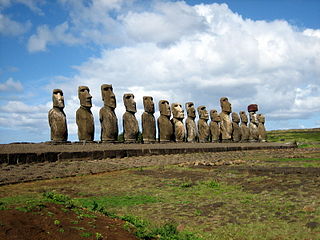
Moai or moʻai are monolithic human figures carved by the Rapa Nui people on Rapa Nui in eastern Polynesia between the years 1250 and 1500. Nearly half are still at Rano Raraku, the main moai quarry, but hundreds were transported from there and set on stone platforms called ahu around the island's perimeter. Almost all moai have overly large heads, which comprise three-eighths the size of the whole statue. They have no legs. The moai are chiefly the living faces of deified ancestors. The statues still gazed inland across their clan lands when Europeans first visited the island in 1722, but all of them had fallen by the latter part of the 19th century. The moai were toppled in the late 18th and early 19th centuries, possibly as a result of European contact or internecine tribal wars.
Chris Tilley is a British archaeologist known for his contributions to postprocessualist archaeological theory. He is currently a Professor of Anthropology and Archaeology at University College London.
The Deverel–Rimbury culture was a name given to an archaeological culture of the British Middle Bronze Age in southern England. It is named after two barrow sites in Dorset and dates to between c. 1600 BC and 1100 BC.
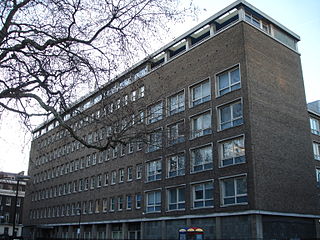
UCL's Institute of Archaeology is an academic department of the Social & Historical Sciences Faculty of University College London (UCL) which it joined in 1986 having previously been a school of the University of London. It is currently one of the largest centres for the study of archaeology, cultural heritage and museum studies in the world, with over 100 members of staff and 600 students housed in a 1950s building on the north side of Gordon Square in the Bloomsbury area of Central London.

Arpi, Argyrippa, and Argos Hippium was an ancient city of Apulia, Italy, 16 miles west of the sea coast, and 2 miles north of modern Foggia. The first name was Argos Hippium then Argyrippa and later Arpi.
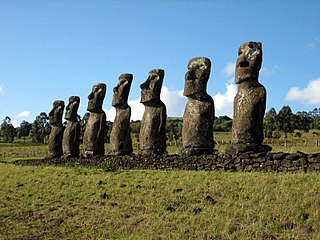
Rapa Nui National Park is a national park and UNESCO World Heritage Site located on Easter Island, Chile. Rapa Nui is the Polynesian name of Easter Island; its Spanish name is Isla de Pascua. The island is located in the southeastern Pacific Ocean, at the southeastern extremity of the Polynesian Triangle. The island was taken over by Chile in 1888. Its fame and World Heritage status arise from the 887 extant stone statues known by the name "moai", whose creation is attributed to the early Rapa Nui people who inhabited the island starting between 300 and 1200 AD. Much of the island has been declared as Rapa Nui National Park which, on 22 March 1996, UNESCO designated a World Heritage Site under cultural criteria (i), (iii), & (v). Rapa Nui National Park is now under the administrative control of the Ma´u Henua Polynesian Indigenous Community, which is the first autonomous institute on the island. The indigenous Rapa Nui people have regained authority over their ancestral lands and are in charge of the management, preservation and protection of their patrimony. On the first of December 2017, the ex-President Michelle Bachelet returned ancestral lands in the form of the Rapa Nui National Park to the indigenous people. For the first time in history, the revenue generated by the National Park is invested in the island and used to conserve the natural heritage.

Maunga Puna Pau is a small crater or cinder cone and prehistoric quarry on the outskirts of Hanga Roa in the south west of Easter Island. Puna Pau gives its name to one of the seven regions of the Rapa Nui National Park.
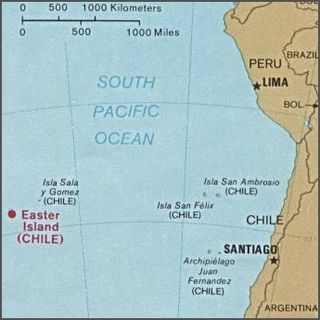
Geologically one of the youngest inhabited territories on Earth, Easter Island, located in the mid-Pacific Ocean, was, for most of its history, one of the most isolated. Its inhabitants, the Rapa Nui, have endured famines, epidemics of disease, civil war, environmental collapse, slave raids, various colonial contacts, and have seen their population crash on more than one occasion. The ensuing cultural legacy has brought the island notoriety out of proportion to the number of its inhabitants.

William Thomas Mulloy Jr. was an American anthropologist. While his early research established him as a formidable scholar and skillful fieldwork supervisor in the province of North American Plains archaeology, he is best known for his studies of Polynesian prehistory, especially his investigations into the production, transportation and erection of the monumental statuary on Rapa Nui known as moai.

The Father Sebastian Englert Anthropological Museum is a museum in the town of Hanga Roa on Rapa Nui in Chilean Polynesia. Named for the Bavarian missionary, Fr. Sebastian Englert, OFM Cap., the museum was founded in 1973 and is dedicated to the conservation of the Rapa Nui cultural patrimony.
Jo Anne Van Tilburg is an American archaeologist best known for her research on the statues of Easter Island. Her primary specialty is rock art.

Mark Brian Roberts is an English archaeologist specialising in the study of the Palaeolithic. He is best known for his discovery of, and subsequent excavations at, the Lower Palaeolithic site of Boxgrove Quarry in southern England. Roberts is principal research fellow at the UCL Institute of Archaeology. He has twice been awarded the Stopes Medal for his contribution to the study of Palaeolithic humans and Pleistocene geology, and in 2021 was made an Honorary Fellow of West Dean College of Arts and Conservation.

Sue Hamilton is a British archaeologist and Professor of Prehistory at the UCL Institute of Archaeology. A material culture specialist and landscape archaeologist, she was the UCL Institute of Archaeology's first permanent female director (2014–22).
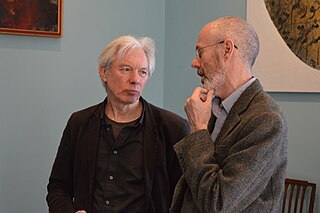
Michael W. Pitts, is an English freelance journalist and archaeologist who specialises in the study of British prehistory. He is the author of several books on the subject, and is the editor of British Archaeology, the publication of the Council for British Archaeology.
Archaeology South-East (ASE) is a large contracts division in southern England which provides professional archaeological services for public and private sector clients. Clients include commercial developers and environment agencies and private house owners who require historic building recording services. ASE is based in offices in Portslade, near Brighton with additional offices in London and Braintree and specialises in work in Southeast England including Greater London.
Barbara Bender is an anthropologist and archaeologist. She is currently Emeritus Professor of Heritage Anthropology at University College London.
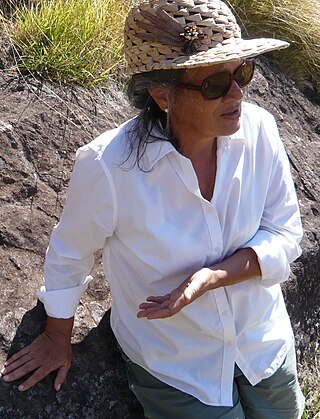
Sonia Haoa Cardinali is a Rapanui archaeologist with the Mata Ki Te Rangi Foundation and coordinator of Easter Island's national monuments. She has made important contributions to understanding the subsistence and survival of the prehistoric inhabitants. Her findings challenge the view that the islanders caused the environmental and social collapse of the island.
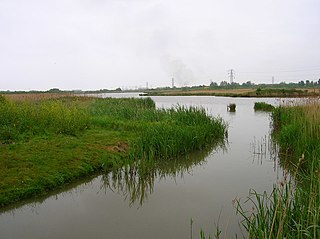
Shinewater is a part of Langney electoral ward in Eastbourne, East Sussex. In 1995 during the clearing of the Hydneye lake a Bronze Age settlement was discovered.
Leskernick Hill is on Bodmin Moor in Cornwall, UK. It is 329m high and has grid reference SX183803. Leskernick Hill is within the Cornwall AONB as part of Area 12: Bodmin Moor in the parish of Altarnun. It lies in an area of moorland that is common land. Its parent hill is Brown Willy and it is within sight of Rough Tor and other local tors














